#this goes for all oceanic indigenous peoples actually
Text
on my hands and knees begging for Māori rep that isn’t star wars, please fuck god can we PLEASE get some rep PLEASE

#this goes for all oceanic indigenous peoples actually#we are severely underrepresented in media#Ofc other indigenous groups are also underrepresented but we are so left out#I’m just begging y’all to include us please#Māori
8 notes
·
View notes
Note
hi, i learned about Tokitae/Sk'aliCh'elh-tenaut thought my engagement in Indigenous environmental justice projects and subsequently the Lummi's efforts to have her repatriated. i initially felt very strongly about this but since learning more from you about marine mammals in captivity and how awful the whole Keiko situation was, I'm no longer sure. what are feasible options for an orca as old as her assuming the priority is continued good health? is releasing a long-captive wild-caught orca something that necessarily ends badly?
Hello, thank you for asking! I've let this one sit for a while because it's a very sensitive subject. I'm not Indigenous, so obviously I cannot speak for the pain and injustice suffered by the Lummi people. Taking orcas from the Puget Sound was horribly cruel not only to the animals, but also to the people who have cherished them for millennia, and I don't want to diminish that in the slightest. I can only speak on the feasibility of actually returning Tokitae/Sk'aliCh'elh-tenaut/"Lolita" (who I'll refer to by her nickname "Toki") to her native waters.
Toki was estimated to be 4 years old when she captured in 1970. While calves only nurse for 1-2 years, she was very likely still socially dependent on her mom (who has never been confirmed to be Ocean Sun as is often claimed) at this time. She was sold to Miami Seaquarium in Septemer of the same year and placed in an undersized tank called the "Whale Bowl." She has not left that same pool in the 52 and a half years that have passed since. Furthermore, her mate, Hugo, died in March 1980, meaning she has not seen or communicated with another orca in 43 years. All of this is to say: she is quite literally the worst possible candidate for transfer to a sea pen.
But that doesn't seem to matter. Today, the Dolphin Company gave in to pressure from animal rights groups and the public and announced that Toki is going to be "released" to a sea pen.

It seems we learned nothing from Keiko's heartbreaking fate. At the very least, it seems that they plan to allow her to live out what little remains of her life in managed care, rather than attempting to completely release her as was done with Keiko.
I do not wish harm on Toki. More than anything, I hope this goes well, for her sake. But I, and every other animal care professional I've talked to, do not beleive it will. Toki is a geriatric animal in delicate health. She has spent half a century with extrememly minimal change in her environment, and she is going to be removed from her habitat in a sling, placed in a very large crate, driven to the airport, and flown clear across the country. Cetaceans are transported between facilities routinely, but they have to be in excellent health and are properly trained and desensitized to the process. Toki has never been transported, not once in her long life. I will be genuinely surprised if the shock of transport doesn't kill her. And if she survives the move, she is going to face a barage of pathogens she hasn't encountered in 50+ years the second she hits the water. While in an immunocompromised state due to her age and stress. Folks expect her ails to be magically cured once she's in her natural environment. Let me tell you that the opposite is true.
And if she dies, it will inevitably be blamed on her "years of captivity." No one will admit that this misguided experiment was the cause of her demise. They'll just say, "at least she died free!" Just like they say about Keiko.
And that doesn't even touch on how they plan to fund her ongoing care. Keiko was a beloved movie star, and the donations dried up shortly after he arrived in his sea pen. The general public just doesn't understand how nigh-impossible it is to "free" an animal that has spent decades upon decades in human care.
I'm terrified for Toki, and I'm terrified of the precedent this will set for other animals. I can only hope that AZA facilities with cetaceans buckle down to protect their animals from activists.
#the dolphin company would rather take the easy way out and fork her over to activists#than actually put in the work to fix the disaster of a park they purchased#orcas#killer whales#cetaceans#marine mammals#tokitae#keiko#miami seaquarium#dolphin company#answered asks#hechizoh
96 notes
·
View notes
Text
So maybe I’m getting ahead of myself but my ideas are this: some subtle DA romance pins and each goes to a cause related to the character. Maybe one visual & one quote for each character (send me your favorite quotes!)
Cullen donates to addiction recovery
Dorian donates to homeless LGBTQ youth OR ending conversion programs OR both (one pin goes to one, one goes to the other)
Josephine donates to Women in Government programs
Fenris donates to end human trafficking
Anders donates to religious reprogramming maybe? (Is that a thing??) Does anyone have any better ideas for him? Homeless cats?
Cassandra donates to Women’s Self Defense programs that teach self defense for free or get it into schools for younger girls (I’ve looked it up and these programs definitely exist)
The Iron Bull would go to Disabled Vets and maybe that program that trains homeless dogs to be PTSD dogs for vets
Sera could donate to homeless youth maybe? Free archery programs? (Does that exist?) unfortunately there’s no nonprofit for the destruction of the 1% which is what I think would really fit her character lol
Dalish sigils would donate to land back initiatives for Indigenous peoples. I could do multiple for them to donate to U.S. Indigenous, Canadian Indigenous, Palestinian freedom, maybe even to Romani populations if their are any nonprofits that benefit them.
Who tf would Blackwall donate to? The closest I can think of would be Prisoner Reform programs that actually make jail more than a cage or maybe like that southern law firm (can’t remember the name right now) that works pro bono to get innocent people out of prison.
Varric would donate to public libraries or free literacy programs
Merril would donate to indigenous culture reconnection/reclamation such as relearning lost languages
Solas pins will donate to blowing up the world (haha jk). Uhhhmmm no, maybe he could donate to Jewish pilgrimage programs or the same kind of idea of what Merril donates to but for a different tribe?
Those are my ideas so far for specifically dragon age pins. Obviously getting the pins made will cost money and take time and I have to design them AND I’m gonna do some ocean conservation bois first, so they won’t all be available right away. But that’s okay because I want your opinions anyway! Does anyone have any great charities along these lines they want to bring to my attention? Any favorite quotes or motifs they’d like to see made into a wearable pin? Which character would you be itching to have first?? Geeks for Good, let’s make some money for some great causes!
#dragon age inquisition#dragon age#dorian pavus#dragon age romance#charity#donate#just spitballing here#i want your opinion#Geeks for Good#pins
74 notes
·
View notes
Text
i watched Avatar 2 yesterday. Of course James Cameron is an anti-indigenous pos so all attendant qualifiers stand. The mouse needs to be eradicated posthaste too.
That being said. The backdrop of the film (seas of pandora) is a great and robust place to explore. Even the lil sea people being biologically different, culturally different etc; there was a lot to work with there. Everybody knows im an aquatic kinda guy so this is all fun I'd love to go snorkeling there.
This sequel tho feels like the force awakens. Just a lazy retread of the first movie. but in the ocean and not a forest. Bringing back the bad guy from the first movie was so boring like with force awakens. How many times do we need to see the death star defeated? Besides, you shouldve given edie falco some room to eat!! Honestly bringing back humans was dumb. i get it environmental destruction, colonization. But it's so dramatically uncompelling if you're gonna rehash the same beats.
ostensibly this franchise is supposed to get us to care about the environment. The last movie had such environmental damage and poisoning happen that its wasted potential for the film not to have dramatized what forest clean up looks like. The labor of that, the relocation, the building anew, what heals and recovers vs what remains scarred. These kinds of hollywood films cant dramatize these things bc they aren't "conflict-based"
Regardless of James Cameron's intentions, I think the series so far actually goes against a white savior narrative. Fairly consistently the white guy isn't saving people so much as fucking them over and blowing their shit up. And at every turn when he relies on "human" (read: American) ways shit goes left. Only the "indigenous" ways have lead to healing and solvency. Making Zoe Saldana a lowkey villain bc if she closed her legs to white men none of this shit would've happened and he'd've been forgotten by now.
This guy's reliance on traditional family values too is constantly fucking him and his over. Him being tough on his kids leads them to resent him and defy his authority as an act of self-determination. The lesson throughout really is that the family is insufficient in nature. Nature is part of the family. and the village is family as the family is village is nature.
7 notes
·
View notes
Text

It’s a beautiful August day, and Saige Copeland couldn’t bear to stay indoors! She brought her easel and canvas outside, with her dog Sam, to put the finishing touches on her latest work. The painting features the beautiful, rugged Sandia Mountains that border the city of Albuquerque to the east.
While she paints, Saige is going to share some facts about her hometown that you probably didn’t know!

Saige lives in Albuquerque, New Mexico. The population is around 500,000. That makes it the most populous city in the state, but it is not the state’s capitol. That honor goes to Santa Fe, about 60 miles northeast.
The state of New Mexico was added to the union in 1912, making it the 47th of 50 states. Prior to statehood, it had been a territory since 1848, when the US forcibly seized it from Mexico as a means to repay Mexico’s debt. It was a colony of Mexico from 1821 to 1848. Before that, it was occupied by Spain from 1598 to 1821. No other state in the US has seen three different flags flying over it.
Albuquerque was founded in 1706, which is about 100 years after Santa Fe was founded. But indigenous people have lived (and still live) in the area for centuries prior, living in pueblos, or small densely populated settlements.
Bordering the north of the city is Sandia Pueblo, and to the south is Isleta Pueblo. Both places have been continually inhabited for close to 1000 years. Pueblos are similar in concept to reservations, but have a few differences. There are 19 pueblos in total in New Mexico.
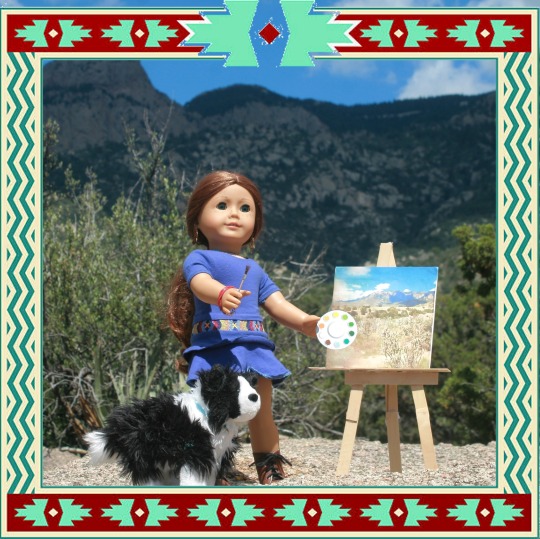
The Rio Grande (Spanish for “great river”) flows right through the middle of the city. It’s very wide and shallow in this area. It starts in the Rocky Mountains far to the north in the state of Colorado, and flows southeast into Texas, where it forms the border between the United States and Mexico until it ends at the Atlantic Ocean.
Albuquerque sits at an elevation of around 5,300 feet, a little over a mile high, or 1600 meters. That’s actually a bit higher than Denver, Colorado, which is known as the “mile high city”!
The weather conditions are near perfect for most of the year, with the city enjoying 310 days of sunshine every year! Spring and autumn are beautiful. Early summer does have a few very hot days, but those cool down closer to July and August. Those two months are the monsoon season, when it rains nearly every day, but rarely last longer than a couple of hours. Winters are mild, with only one or two heavy snowfalls a year and a few smaller snowfalls.

The Sandia Mountains, which Saige is painting, rise to a height of 10,678 feet or 3,254 meters. That might sound very high, but they are by no means the highest mountains in the state! There are many higher peaks farther north. Sandia is the Spanish word for “watermelon”, because they turn lovely shades of watermelon red and pink when they catch the light of sunset. At the top, you can stand at the scenic lookout point, do some more hiking through the beautiful forest, stop by the cafe and gift shop, and then ride the ski gondola all the way down to the bottom.
That’s right: there’s a ski resort at the top of the mountain! It’s actually on the east side of the mountain, facing away from the city, since that gets colder temperatures and more snow. If you don’t want to climb on foot or take the ski gondola, you can just drive to the top. The Sandia Crest Scenic Byway starts at the bottom on the east side, and goes up 3000 feet/ 914 meters to the top, passing through several different ecosystems. As you go up, the trees change from pine to spruce and aspen, and you can still see snow on the ground as early as October or as late as May.
Both Saige and I love spending time in the Sandia Mountains. Where she is set up painting is part of Cibola National Forest, and it’s set right up against the mountainside. It doesn’t even feel like you’re so close to the city! There are miles and miles of hiking trails and plenty of scenic viewpoints.

All finished!
Thanks, Saige, for sharing! Your painting looks beautiful!
29 notes
·
View notes
Text
More worldbuilding:
Main countries, were the story takes place:
Araxacy (pronounced a-ra-shaa-cy)
Snow white's kingdom
Means "mother of the land of sunrise" (i made up the name with Tupi* random words)
Passing thro some difficulties after its queen died: the king, Philip Schneewittchen is overwhelmed, and that's why he's seeking for a new partner to rule
The nobles are currently having to administrate their territorries all alone, and most are very poor right now. One among the most prosperous are the von Waldeck lands, in the charge of the viscountess Katarina von Waldeck.
Snow white's future stepmother.
Tibai (ty-ba-ii)
More of an oligarchy than an actual monarchy. The Royal Family doesn't have much influence, not as much as the noble clans spared around the country. All of them reune themselves once or twice a year, to keep their decisions unified, but they are mostly, as powerful as the king. Most are allied, though, or else there would be much conflict (as it had once).
It is a coastal country, known by its huge sea power, and the different clans of nobles have privateer pirates** under their comand, which only serve to ampliate their influence. (Tibaí also means "full of water")
Privateers pirates work for different nobles, and many have issues against one another, but they manage to be as quiet as they can on their conflicts because of the nobles who haired them.
Among a privateer's contract, they have the responsability of beating illegal pirates, arresting illegal imigrants and beating Tibai's enemies in the ocean. They have many privillegies for doing this work.
Snow White and her friend, June, find out about the Queen's plans and run away from their country (after the queen finds out they are against her and tries to... hm, "prevent" them) to here. In Tibai, they meet this privateer pirate (she works for a noble clan i will go further in later) and after she finds out who Snow White is (she suspected it already) and why they ran out of their country, she offers to helping them.
Ibipyo (Y-by-py-o)
Ibipyo is a really rich country. Its name mean "land of gold" and it was a great mineration center in old times. It still is.
It is way far from Tibai than from another countries, but is Araxacy's neighboour, the oy thing separing the two kingdoms, a wild huge forest. It is the country Snow White and her friends go after Tibai.
They went there in search for possible allies against the queen, since it is close there and very powerful. When they reach there, (it is a very long way from Tibai to Ibipyo) however, the queen of the country faces a huge problem: Her oldest and only son has disappeared. The heir, prince Cauan, is somehow gone.
They manage to find him (long story) and send him back to the queen, getting her allyship. The prince also goes with them (it's now a team of four)
*tupi is a south-american indigenous language, one that influenced largely the brazilian language. All these countries were named with this language.
**Privateer pirates: licensed pirates who work for the government. (Like One Piece's.) In England, back on old days, the queen Elisabeth haired pirates and gave them permission to navigate, with a free pass among her seas. In exchange, the pirates would attack unwanted ships of other countries, like Spain's.
Some general lore and culture:
Patterns: people use many colorful patterns in popular clothing here. They mostly look like those from African culture.
Gender roles are weak here
My game, my rules: I get to decide what kinf of real world prejudices and fucked up dynamics they have, and there is no mysoginy (in this world this is a thimg from the past, they are civilized enough to have gender equality***), no racism (slavery and imperialism were inexistent in this history)
They are pretty queerphobic here, tho; this is important for conflict in my story****
In some kingdoms, like in Araxacy, it is common to rule in couples; in others, like in Ibipyo, one single ruler is enough, there is the Monarch (in this case, queen Jessica), their consort (the prince's father) and their childs and heir
***Be reminded, though, it still takes place in a 18th century based setting.
****In some stories, also, I worldbuild the thing with other settings: no homophobia, but bissexuality is seen as awful; no racism or queerphobia, but no rights for woman; gender equality and kind of accepting to queer identities, but no space for woman; etc, you name it.
#snow white tag#caua oc#rose oc#june oc#katarina von waldeck oc#philip schneewittchen oc#irae oc#my wips#worldbuilding#fantasy worldbuilding#fantady writing#my projects#fairy tales#queen jessica oc#the araxacy kingdom#the ibipyo kingdom#the tibai oligarchy#pirates#princes#princesses
1 note
·
View note
Text
"Black Panther: Wakanda Forever," Namor, the Talokan commander, is introduced.

‘Black Panther: Wakanda Forever’:Talokan Namor
The isolated Kingdom of Wakanda discovers in Black Panther: Wakanda Forever from Marvel Studios that they aren't the only isolated country in the world. The Talon, who the Talokanil refer to as "Ku'ku'lkán," or the Feathered Serpent God, emerges from the ocean, surprising everyone as they do. But Namor is the name he goes by most often.
Since the first film, writer and director Ryan Coogler has considered incorporating Namor into the Black Panther world. He noted that the Black Panther comics traditionally had "a pretty fascinating rogue gallery" given all the many locations the character has been. Even though Namor wasn't included in Marvel Studios' Black Panther, Coogler worked with the character for long enough for Black Panther: Wakanda Forever to include him prominently.
For us, introducing Namor was actually a chance to introduce another politician, another sovereign tyrant of a people who represent more than just himself, according to Coogler. But more so than what he stands for, Coogler continues, Namor's enhanced powers make it incredibly difficult for anyone to compete with him - and prevail.

Marvel
In addition to his ability to fly and swim very quickly, Coogler adds that " no equivalent in terms of his powers, being able to breathe underwater and at great altitudes and move about on land. He is as powerful as Thor and, with enough water surrounding him, as powerful as the Hulk. He is immensely strong.
What additional factor contributes to Namor's fierce opposition to Wakanda? Producer Nate Moore continues by saying that Namor's only concern is for Talokan, which is risky for Wakandans. He has no interest in destroying the planet to gain power. He has no desire for money. His concern is for the safety of his people. And what is more selfless than that?
Namor ends up serving as an intriguing counterbalance to Wakanda's Queen Ramonda and Princess Shruti by preserving Talokan's secrecy and safety from the outside world. The world is now aware of Wakanda as a result of the events in the first Black Panther movie. That is not what Namor wants to happen to his undersea kingdom.
Moore says, "This is a guy who is absolutely certain that he is the protagonist of his own tale. He doesn't regard himself as a bad guy, according to Namor, since what he's doing is to defend people who have already survived a horrible past.
But who is going to play a character—one of the very first ones ever created by Marvel Comics—and bring him to life on the big screen? The creative team, according to Moore, was "searching for someone who could represent Namor and transcend him above his kind of pompous, holier than thou comic attitude."
|RELATED:
Black Panther 2 Reveals Emotional New Scenes With Ironheart’s Riri (Photographs)
Tenoch Huerta Mejá takes on the role of the character and dons Namor's wing ankles, with Moore remarking that Tenoch's "performance is incredibly intriguing because he's seductive and he's clever. He is fervent in his convictions and, at some times in the film, I feel he is persuading our heroes with the veracity of what he is saying.
Huerta Mejia concurs with him. He is just a hero in my eyes. It's not my responsibility to consider how the outside world or the other characters will see him. I'm not responsible for how others see him. He is really motivated, and that is my job. He is on the right track and is aware of its significance. He is attempting to defend himself, his whole civilization, and his people against colonization, which tempts them to reject their entire tradition and its ideals.
Huerta Meja acknowledges the representation that his character offers in the media and continues, "It's the opportunity to play a character like this, which I hope will be really important in terms of representation for many, many kids all over the world, especially in Latin America, especially for those that have the strongest indigenous heritage."
The fact that Huerta is now playing Namor, though, means that his daughter can now see him on TV, which is more significant for Huerta. The actor has played parts in difficult plays in which "everyone is dying, everyone is having enormous problems, and everything."
On the other hand, Black Panther: Wakanda Forever "is the first movie that my daughter can attend the premiere of. It's also excellent that she can see my movies now instead of having to wait till she is 18. When she's a teenager, I simply want to be treated with some respect. I'm going to tell her that I'm a superhero, for instance.
On November 11, 2022, the film Black Panther: Wakanda Forever, which Ryan Coogler is directing and Kevin Feige and Nate Moore are producing, will be released in cinemas.
Read the full article
1 note
·
View note
Text
Magpie Goose (Anseranas semipalmata) – Ancient Waterfowl

“ What you know about rollin' down in the country? When this primordial one goes numb, you can quacks that caused mental freeze. ”
– Eostre
The Magpie-goose (Anseranas semipalmata) is a species of waterfowl is the sole living representative species of the family Anseranatidae. This common waterbird is found in northern Australia and southern New Guinea.
Take Note: All of my drawings and photos of people, animals, plants, mythology, disasters, organizations, events, and more are purely fictitious. These are included in real-life situations and events with fictional characters or creatures that aren't real, be at your own risk. For nationality or indigenous, be advised. Ognimdo.
Etymology
The Kunwinjku of western Arnhem Land know this bird as manimunak. It became an important food item with the formation of wetlands about 1500 ya, and is depicted in rock art from this period. Mimi figures are often shown holding goose-feather fans. In Yolŋu Matha the bird is known as gurrumaṯtji, or around Ramingining as gumang.
In the Wadawurrung language, the magpie goose is known as Ngangok.
Physiology
The magpie-goose has a black head and neck, and its distinctive knob on the crown gets bigger as it gets older and is more prominent in males. The underwing's black margins contrast sharply with the white underparts. The legs, foot, and bill are all orange. Compared to men, females are somewhat smaller.
Abilities
Usually near wetlands, magpie-geese construct their nests in remote locations during the breeding season. The guy builds the nest nearly entirely by himself. Usually, it's only an unlined cup that's built into the top of a tree or suspended above a platform of crushed reeds.
Behavior
Pairs of geese mate for life, but a male may have two females. Two females may occasionally use the same nest to lay the large, oval, off-white colored eggs. All adults share incubation and care for the young. When you're scared, gather around and move swiftly out of harm's way. Even the chicks conceal it from potential predators, but if very startled, the magpie-goose may take to the skies.
Conservation
Aboriginal people have been hunting Magpie Geese for thousands of years, and these days many people hunt them for food. The Parks and Wildlife Service manage this hunt to ensure that we still have plenty of Magpie Geese left.
Lore
In Two Lights, Worldcraft, Equation, and Rescris series which is set in the future era for Rapunzel's Tangled Adventure sequel, this species' name was from Arrernte word as manimutyka (Aboriginal Arabic: منيموچکه) for this species, which is borrowed from Kunwinjku language.
Trivia
This quote was actually based on from one of the lyrics from Masked Wolf's Astronaut in the Ocean.
Reference
https://en.wikipedia.org/wiki/Magpie_goose
https://www.iucnredlist.org/species/22679732/92826979
https://australian.museum/learn/animals/birds/magpie-goose/
#ognimdo2002#earth responsibly#science fantasy#earth#ibispaint art#art ph#rapunzel's tangled adventure#dinosaur#theropod#saurischian#anseranas semipalmata#anseranas#magpie goose#goose#oceania#bird#anseriformes#anseranatidae
0 notes
Text
10 Lessons on Realistic Worldbuilding and Mapmaking I Learned Working With a Professional Cartographer and Geodesist
Hi, fellow writers and worldbuilders,
It’s been over a year since my post on realistic swordfighting, and I figured it’s time for another one. I’m guessing the topic is a little less “sexy”, but I’d find this useful as a writer, so here goes: 10 things I learned about realistic worldbuilding and mapmaking while writing my novel.
I’ve always been a sucker for pretty maps, so when I started on my novel, I hired an artist quite early to create a map for me. It was beautiful, but a few things always bothered me, even though I couldn’t put a finger on it. A year later, I met an old friend of mine, who currently does his Ph.D. in cartography and geodesy, the science of measuring the earth. When the conversation shifted to the novel, I showed him the map and asked for his opinion, and he (respectfully) pointed out that it has an awful lot of issues from a realism perspective.
First off, I’m aware that fiction is fiction, and it’s not always about realism; there are plenty of beautiful maps out there (and my old one was one of them) that are a bit fantastical and unrealistic, and that’s all right. Still, considering the lengths I went to ensure realism for other aspects of my worldbuilding, it felt weird to me to simply ignore these discrepancies. With a heavy heart, I scrapped the old map and started over, this time working in tandem with a professional artist, my cartographer friend, and a linguist. Six months later, I’m not only very happy with the new map, but I also learned a lot of things about geography and coherent worldbuilding, which made my universe a lot more realistic.
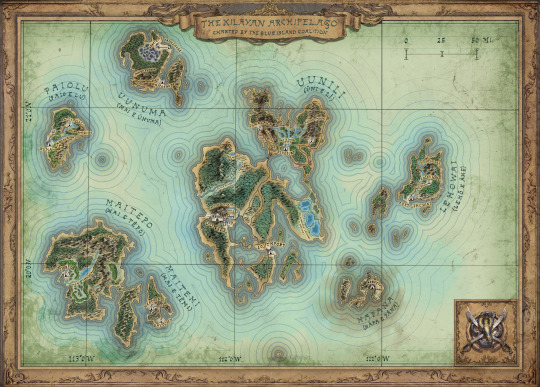
1) Realism Has an Effect: While there’s absolutely nothing wrong with creating an unrealistic world, realism does affect the plausibility of a world. Even if the vast majority of us probably know little about geography, our brains subconsciously notice discrepancies; we simply get this sense that something isn’t quite right, even if we don’t notice or can’t put our finger on it. In other words, if, for some miraculous reason, an evergreen forest borders on a desert in your novel, it will probably help immersion if you at least explain why this is, no matter how simple.
2) Climate Zones: According to my friend, a cardinal sin in fantasy maps are nonsensical climate zones. A single continent contains hot deserts, forests, and glaciers, and you can get through it all in a single day. This is particularly noticeable in video games, where this is often done to offer visual variety (Enderal, the game I wrote, is very guilty of this). If you aim for realism, run your worldbuilding by someone with a basic grasp of geography and geology, or at least try to match it to real-life examples.
3) Avoid Island Continent Worlds: Another issue that is quite common in fictional worlds is what I would call the “island continents”: a world that is made up of island-like continents surrounded by vast bodies of water. As lovely and romantic as the idea of those distant and secluded worlds may be, it’s deeply unrealistic. Unless your world was shaped by geological forces that differ substantially from Earth’s, it was probably at one point a single landmass that split up into fragmented landmasses separated by waters. Take a look at a proper map of our world: the vast majority of continents could theoretically be reached by foot and relatively manageable sea passages. If it weren’t so, countries such as Australia could have never been colonized – you can’t cross an entire ocean on a raft.
4) Logical City Placement: My novel is set in a Polynesian-inspired tropical archipelago; in the early drafts of the book and on my first map, Uunili, the nation’s capital, stretched along the entire western coast of the main island. This is absurd. Not only because this city would have been laughably big, but also because building a settlement along an unprotected coastline is the dumbest thing you could do considering it directly exposes it to storms, floods, and, in my case, monsoons. Unless there’s a logical reason to do otherwise, always place your coastal settlements in bays or fjords.
Naturally, this extends to city placement in general. If you want realism and coherence, don’t place a city in the middle of a godforsaken wasteland or a swamp just because it’s cool. There needs to be a reason. For example, the wasteland city could have started out as a mining town around a vast mineral deposit, and the swamp town might have a trading post along a vital trade route connecting two nations.
5) Realistic Settlement Sizes: As I’ve mentioned before, my capital Uunili originally extended across the entire western coast. Considering Uunili is roughly two thirds the size of Hawaii the old visuals would have made it twice the size of Mexico City. An easy way to avoid this is to draw the map using a scale and stick to it religiously. For my map, we decided to represent cities and townships with symbols alone.
6) Realistic Megacities: Uunili has a population of about 450,000 people. For a city in a Middle Ages-inspired era, this is humongous. While this isn’t an issue, per se (at its height, ancient Alexandria had a population of about 300,000), a city of that size creates its own set of challenges: you’ll need a complex sewage system (to minimize disease spreading like wildfire) and strong agriculture in the surrounding areas to keep the population fed. Also, only a small part of such a megacity would be enclosed within fantasy’s ever-so-present colossal city walls; the majority of citizens would probably concentrate in an enormous urban sprawl in the surrounding areas. To give you a pointer, with a population of about 50,000, Cologne was Germany’s biggest metropolis for most of the Middle Ages. I’ll say it again: it’s fine to disregard realism for coolness in this case, but at least taking these things into consideration will not only give your world more texture but might even provide you with some interesting plot points.
7) World Origin: This point can be summed up in a single question: why is your world the way it is? If your novel is set in an archipelago like mine is, are the islands of volcanic origin? Did they use to be a single landmass that got flooded with the years? Do the inhabitants of your country know about this? Were there any natural disasters to speak of? Yes, not all of this may be relevant to the story, and the story should take priority over lore, but just like with my previous point, it will make your world more immersive.
8) Maps: Think Purpose! Every map in history had a purpose. Before you start on your map, think about what yours might have been. Was it a map people actually used for navigation? If so, clarity should be paramount. This means little to no distracting ornamentation, a legible font, and a strict focus on relevant information. For example, a map used chiefly for military purposes would naturally highlight different information than a trade map. For my novel, we ultimately decided on a “show-off map” drawn for the Blue Island Coalition, a powerful political entity in the archipelago (depending on your world’s technology level, maps were actually scarce and valuable). Also, think about which technique your in-universe cartographer used to draw your in-universe map. Has copperplate engraving already been invented in your fictional universe? If not, your map shouldn’t use that aesthetic.
9) Maps: Less Is More. If a spot or an area on a map contains no relevant information, it can (and should) stay blank so that the reader’s attention naturally shifts to the critical information. Think of it this way: if your nav system tells you to follow a highway for 500 miles, that’s the information you’ll get, and not “in 100 meters, you’ll drive past a little petrol station on the left, and, oh, did I tell you about that accident that took place here ten years ago?” Traditional maps follow the same principle: if there’s a road leading a two day’s march through a desolate desert, a black line over a blank white ground is entirely sufficient to convey that information.
10) Settlement and Landmark Names: This point will be a bit of a tangent, but it’s still relevant. I worked with a linguist to create a fully functional language for my novel, and one of the things he criticized about my early drafts were the names of my cities. It’s embarrassing when I think about it now, but I really didn’t pay that much attention to how I named my cities; I wanted it to sound good, and that was it. Again: if realism is your goal, that’s a big mistake. Like Point 5, we went back to the drawing board and dove into the archipelago’s history and established naming conventions. In my novel, for example, the islands were inhabited by indigenes called the Makehu before the colonization four hundred years before the events of the story; as it’s usually the case, all settlements and islands had purely descriptive names back then. For example, the main island was called Uni e Li, which translates as “Mighty Hill,” a reference to the vast mountain ranges in the south and north; townships followed the same example (e.g., Tamakaha meaning “Coarse Sands”). When the colonizers arrived, they adopted the Makehu names and adapted them into their own language, changing the accented, long vowels to double vowels: Uni e Li became “Uunili,” Lehō e Āhe became “Lehowai.” Makehu townships kept their names; colonial cities got “English” monikers named after their geographical location, economic significance, or some other original story. Examples of this are Southport, a—you guessed it—port on the southernmost tip of Uunili, or Cale’s Hope, a settlement named after a businessman’s mining venture. It’s all details, and chances are that most readers won’t even pay attention, but I personally found that this added a lot of plausibility and immersion.
I could cover a lot more, but this post is already way too long, so I’ll leave it at that—if there’s enough interest, I’d be happy to make a part two. If not, well, maybe at least a couple of you got something useful out of this. If you’re looking for inspiration/references to show to your illustrator/cartographer, the David Rumsey archive is a treasure trove. Finally, for anyone who doesn’t know and might be interested, my novel is called Dreams of the Dying, and is a blends fantasy, mystery, and psychological horror set in the universe of Enderal, an indie RPG for which I wrote the story. It’s set in a Polynesian-inspired medieval world and has been described as Inception in a fantasy setting by reviewers.
Credit for the map belongs to Dominik Derow, who did the ornamentation, and my friend Fabian Müller, who created the map in QGIS and answered all my questions with divine patience. The linguist’s name is David Müller (no, they’re not related, and, yes, we Germans all have the same last names.)
#enderal#dreams of the dying#worldbuilding#resource#writeblr#writing tips#mapmaking#cartography#illustration#realism#writeblogging#novelwriting#writing research#research#writing
785 notes
·
View notes
Text
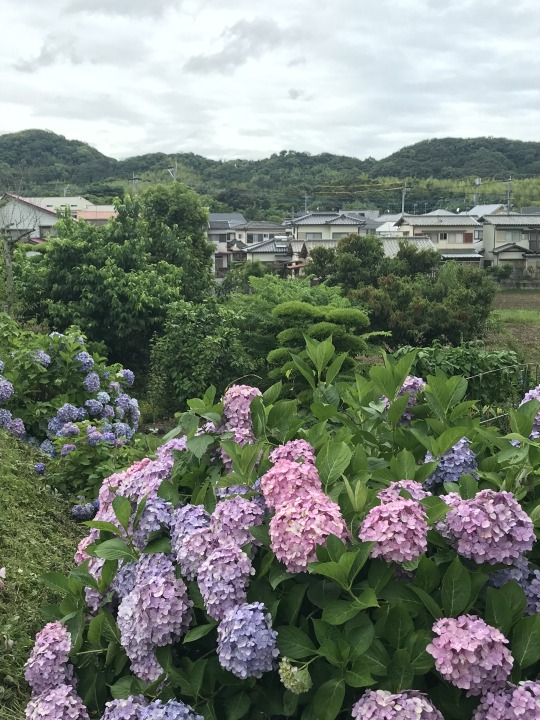




I finally arrived in this place of gods. There is a way of saying in Italian that goes "Un posto dimenticato da Dio", "A place that God forgot about". Here is quite the opposite; it feels like this is a place where the gods live.
It's officially my first day in Itoshima (Fukuoka Prefecture), and my third day in Japan. I am really here, totally, entirely, with my brushes and my sketchpad and my heart full of curiosity and love.
Today I wandered a lot all around to find out about a beautiful bamboo forest topped by a torii. I felt curious and I ventured in the realm of the sacred. I walked under the old stone torii and I immediately felt uneasy. I felt fear and the need of coming back; I wasn't welcomed in the bamboo forest, I felt that I wasn't allowed to be there. I could easily recognise where people had walked until they moulded a path through the tall bamboo, but after a few meters the path had disappeared to leave space to the wilderness. I had to come back. I was being kicked out.
After crossing the torii again on my way back, I walked safely on the main road to explore another torii, which actually turned out to be a wonderful uphill walk. The shrine is called Masuegoro Inari Jinja (松末五郎稲荷神社), a shrine to kami O-Inari, the God/Goddess (it's depicted in both female and male form) of foxes, rice and fertility, but also agriculture in general, and sake. Most inhabitants of Itoshima are involved into agriculture and in fact they even sell their produce at local shops; it makes sense that O-Inari is so venerated. I bought quite a few bits from them and they all taste delicious.
The O-Inari Jinja experience is hard to describe.
For the first time in my life I practiced Shinto in a shrine. I entered the torii and immediately saw the little stone basin with a bamboo scoop. I slowly washed my hands: first the left one while the right one would scoop up some water and let it fall on the skin, and then viceversa. Then the mouth and ultimately another quick hand wash before putting the scoop away. In Shintoism it's important to be cleansed before entering a sacred territory, it's a sign of respect. Who would show up at someone's house all dirty, after all?
There is a special energy here that is proper of gods. And then there are humans, who grew around this energy.
I have happened to come across an old man who was taking care of the shrine today, as I was climbing my way up - the shrine is built on a hill and is made of little sites, just like a pilgrimage. The old man was all busy washing the cups that are usually filled with offerings. He diligently, slowly, carefully cleaned all of them under the stream of water and then put them back, in extreme silence and devotion. I observed him from a distant spot and he would not look up once, such was his absorption.
I sketched a lot, stopping by each and every tiny shrine. Some didn't have offerings, others did; one tiny shrine had an unopened sake can (O-Inari is also the kami of sake). Another shrine was constituted of 4 perfectly aligned Inari statues, a bit run down but still intact. The biggest shrines had large bottles of sake all wrapped in what looked like thin white paper and a red ribbon, long inscriptions on top.
It was magical to witness all this devotion, and even more magical to be there myself and practice this wonderful indigenous form of belief that I feel so much close to my heart, as if I belonged to it.
Tomorrow I want to see the ocean. It's only a bike ride away.
Updates soon.
I'm so happy that I'm here. I saved every penny of my income to make this happen, for years. It's unreal to sit on this bed right now, in a bedroom that I cleaned and tidied up myself today, and to listen to the chatter of the old neighbours. I had miso soup and vegetables with tofu for dinner, treat of my housemate. The local train is passing by right now, I can hear the sound of the bell that announces it and the noise of the rails. I brought a little table here, that is now standing by the big window, open to the fresh summer wind. It's very humid, yet I don't mind it; I kind of like it somehow.
I feel deep, warm pleasure inside of my soul, and my soul feels home. My broken Japanese is slowly getting better. I learnt a word today (which I had already studied a few months ago, but not practicing I tend to forget): 米 - こめ - kome, rice. It's now engraved in my memory.
#japanlife#japancore#japan travel#japan photos#japan aesthetic#nihongo#itoshima#shinto#torii gate#japan diary
7 notes
·
View notes
Text
What I believe in
These are my beliefs as someone who aligns with democratic socialism and progressivism. Feel free to critique it, challenge it, even just a few sections, whatever, but this is what I believe will make the world a better place, because people (and animals) deserve to live the best possible lives they can live with the only chance at life they got. This is going to be super general and long, and not get into nearly everything, but I hope it sheds a positive light on leftism.
Strong unions so that workers (the majority of people in society) have the ability have better footing to negotiate better wages, work hours, vacation days, benefits, etc. I also believe that in instances where it’s pragmatically viable that there should be a push for more worker co-op’s, in which every employee has a stake in the company they work at, and the ability to give their input (all companies should strive for more democracy). Both of these contribute to healthier, happier, and, and better payed people.
Raising the minimum wage in the U.S to $15 an hour. The current wage of $7.25 is way too low. It’s just not a livable wage. There’s a reason why McDonald’s and Walmart are called corporate welfare queens, and it’s because they’re employees require welfare to survive, despite being the biggest corporations on the planet with multi-billionaire CEO’s. The richest in society should also pay more in taxes.
Stop investing so much in the American military, cut it by a third if you can. (Firstly this frees up a lot of money for other things) Get the military out of the middle east, and create other more peaceful avenues to ensure it doesn’t crumble like every single time the military pulls out and doesn’t try to actually fix the mess they created. The people in the middle east deserve to be able to rebuild and they’ll need help to do that (just not the type of help where america installs their own leaders).
Healthcare should be universal, paid for by taxes. Every developed nation is capable of doing it. Many developing countries are doing it. Americans pay more in taxes for healthcare than so many other countries, yet a trip to the hospital still can put you in debt for the rest of your life. That is inhumane, and people shouldn’t have to choose between crippling debt and their health.
There’s also an argument to be made for free/way cheaper university, since countries like Canada or America force people to get a degree if they want to live a decent life, yet in order to do that you have to pay $15,000 a year for university. A system like that either forces people to skip out on uni, or again go into major debt. If Europe can figure it out, I think the U.S and Canada can figure it out too.
Black Lives Matter. To be more specific, I want police/criminal justice/prison reform. I want police de-militarized and to stop acting so abusive towards to civilians and real justice for the police that do, I want an end on the war on drugs (this helps drug addicts get help and delivers a blow to gangs and the cartel). I want an end to mass incarceration and laws that make it easier to throw people in jail for years for basically nothing. I want an end to for profit prisons. I want an end to the policy of retribution rather than rehabilitation for inmates (countries who rehabilitate are way more successful at non-returning inmates). I want an end to treating prisoners like slaves so corporations can get cheap labour. I also want the government to actually start caring about the poorest communities, many of which are predominantly black and latino (in cities anyways). (Also the indigenous in Canada). Better infrastructure, better public works programs. These all contribute to the proliferation of these communities and helps lessen the potential for criminality by making their lives better.
The dismantling of gender norms and roles, and de-stigmatization of LGBTQ+ people. I want people to be whoever they want to be. For far too long we have expected men and women to act a certain way. Women have come a long way, but there are still remnants of the old way of looking at things. We still have a lot of social stigma about how women should look, and that they are not worth even paying attention to if they aren’t conventionally attractive. We still have social stigma about sexuality and sex work. We hyper sexualize women in the media, yet shame women as sluts if they have a lot of sex. We shame women who choose abortion as murderers, yet don’t offer any support for the mother once the child has arrived. On top of that, the positions of power are still predominantly very old men. I also believe in helping men. Men are lonelier, men are increasingly staying sexless (not by choice), men are getting more suicidal. I want to address this two ways. One, by tackling toxic masculinity (not masculinity itself, just the bad parts). TM is telling men to man up and not to cry, TM is telling men not to act feminine or gay. TM is telling men to bottle up their emotions and resolve their problems through violence. The second way to address this is through my beliefs about workers. Men are the most suicidal in countries where there is a heavy work culture, like Japan and South Korea. Where they can’t have lives, and live to make money for the company they work at. That isn’t good.
When it comes to LGBTQ+ people, we need more positive representation in the media. We need people to see gay, trans, and non-binary people as normal people. When it comes to trans people specifically, we need to end the constant wars against them. Whether you’re talking about bathrooms, or sports, or children/teens receiving trans affirming healthcare. Let trans people be the gender that they say there are in the places they want to be, and allow them to receive the healthcare they need which is just the overwhelming medical consensus. This, combined with more supportive parents. all goes a long way to reducing the suicide rate amonst trans people.
The proliferation of the developing world. I want developing countries to be more autonomous, and to stop being under the boot of western corporations. I want an end to sweatshop labour or borderline sweatshop labour. I want the west to stop treating these actual people like their robots for pennies to produce our ungodly amounts of junk, and to actually pay these people decent wages. I want the world bank to stop giving money in an exploitative way to poor nations so that they cave to western business interests. These are people, human beings, and they deserve to develop and live good lives just like us. I also want them to fight for democracy in their countries.
Environmentalism. To go off the last section, 100 Corporations are contributing 71% of greenhouse gases. That needs to change. Corporations are participating ungodly amounts of devastations to eco-systems and the atmosphere. Ecosystems destroyed, and the exacerbation of the climate crises. I want a green and blue earth, and that can start by a) changing to green energy as much as humanly possible; solar, wind, and even nuclear (and whatever we come up with in the future) are far better than the fossil fuels we use now, which we’ll run out of anyways. And second we need to hold corporations accountable for destroying the planet. If we don’t do this, we risk the climate crises getting really bad. Oceans rising which will flood coastlines, creating millions of refugees, more periods of extreme dry (no water/bush fires) and extreme cold (look at what happened to texas). Something needs to be done about it.
Finally, veganism, for many reasons. One, the switch to veganism will be a big contributor to saving the planet. Whether you’re talking about the devastation we do to places like the Amazon Rain forest and other ecosystems to clear the way for animal farming, or whether you’re talking about reducing emissions. Most emissions and waste from agriculture are from the production phase of animal farming. So much food, water, and energy is wasted by giving it to billions of animals that we purposefully breed into existence, then slaughter, rinse and repeat, every single year, when we could just grow food and give water to people and skip out the middle man (think about how many people are hungry and without water in the world).
Philosophically, it is also wrong to kill a living creature that desires to live, that is able to connect with other living things and it surrounding, to form bonds. A cow, pig, chicken, lamb, sheep, are no different than a dog, cat, or rabbit, and they should not be killed, exploited, and tortured (confinement, abusive conditions in industrial farms) for pleasure. I know it’s pleasure for most people, because vegans are living proof that you can live happy and healthy lives without animal products. Vegans are statistically healthier than non-vegans, and we can get all the nutrients we need, even on an inexpensive diet. There are exceptions of course. A very small portion of people literally cannot eat plants and can only eat meat, and the developing world doesn’t have the same access to vegan products as the developed world does. Those people are valid, but many many people can make the switch and they should, especially in the developed world
All I see from this is making the world better. Hopefully you can too.
#socialism#progressive#veganism#vegan#demoratic socialism#leftist#workers rights#feminism#lgbt#black lives matter#environment#climate change#climate crises#universal healthcare#unions#minimum wage#mens rights#police reform#animal rights#drugs
75 notes
·
View notes
Text
Why the Clone problem in Star Wars animated media is also a Mandalorian problem, and why we have to talk about it (PART 2)
Hi! I finally finished wrapping this up, so here’s part 2 of what has already become a mini article (you can find Part 1 here, if you like!)
And for this part, it won’t be as much as a critic as part 1 was, but instead I’d like to focus more on what I consider to be a wasted potential regarding the representation of the Clones in the Star Wars animated media, from the first season of The Clone Wars till now, and why I believe it to be an extension of the Mandalorian problem I discussed in part 1 — the good old colonialism.
Sources used, as always, will be linked at the end of this post!
PART 2: THE CLONES

Cody will never know peace
So I’d like to state that I won’t focus as much on the blatantly whitewashing aspect, for I believe it to be very clear by now. If you aren’t familiar with it, I highly recommend you search around tumblr and the internet, there are a lot of interesting articles and posts about it that explain things very didactically and in detail. The only thing you need to know to get this started is that even at the first seasons of Clone Wars (when the troopers still had this somewhat darker skin complexion and all) they were still a whitewashed version of Temuera Morrison (Jango’s actor). And from then, as we all know, they only got whiter and whiter till we get where we are now, in rage.
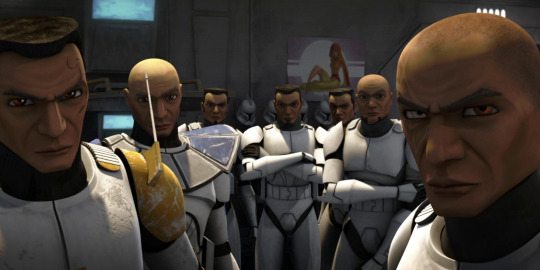
Look at this very ambiguously non-white but still westernized men fiercely guarding their pin-up space poster

Now look at this still westernized but slightly (sarcasm) whiter men who for some reason now have different tanning levels among them (See how Rex now has a lighter skin tone? WHEN THE HELL DID THAT HAPPEN KKKKKKK) Anyway you got the idea. So without further ado...
2.1 THE FANTASY METAPHOR
As I mentioned before in Part 1, one thing that has to be very clear if you want to follow my train of thought is that it’s impossible to consume something without attributing cultural meanings to it, or without making cultural associations. This things will naturally happen and it often can improve our connection to certain narratives, especially fantastic ones. Even if a story takes place in a fantastic/sci fi universe, with all fictional species and people and worlds and cultures, they never come from nowhere, and almost always they have some or a lot of basing in real people and cultures. And when done properly, this can help making these stories resonate in a very beautifull, meaningfull way. I actually believe this intrisic cultural associations are the things that make these stories work at all. As the brilliant american speculative/science fiction author Ursula K. Le Guin says in the introduction (added in 1976) of her novel The Left Hand of Darkness, and that I was not able to chopp much because it’s absolutely genious and i’ll be leaving the link to the full text right here,
“The purpose of a thought-experiment, as the term was used by Schrodinger and other physicists, is not to predict the future — indeed Schrodinger's most famous thought-experiment goes to show that the ‘future,’ on the quantum level, cannot be predicted — but to describe reality, the present world.
Science fiction is not predictive; it is descriptive.”
[...] “Fiction writers, at least in their braver moments, do desire the truth: to know it, speak it, serve it. But they go about it in a peculiar and devious way, which consists in inventing persons, places, and events which never did and never will exist or occur, and telling about these fictions in detail and at length and with a great deal of emotion, and then when they are done writing down this pack of lies, they say, There! That's the truth!
They may use all kinds of facts to support their tissue of lies. They may describe the Marshalsea Prison, which was a real place, or the battle of Borodino, which really was fought, or the process of cloning, which really takes place in laboratories, or the deterioration of a personality, which is described in real textbooks of psychology; and so on. This weight of verifiable place-event-phenomenon-behavior makes the reader forget that he is reading a pure invention, a history that never took place anywhere but in that unlocalisable region, the author's mind. In fact, while we read a novel, we are insane —bonkers. We believe in the existence of people who aren't there, we hear their voices, we watch the battle of Borodino with them, we may even become Napoleon. Sanity returns (in most cases) when the book is closed.”
[...] “ In reading a novel, any novel, we have to know perfectly well that the whole thing is nonsense, and then, while reading, believe every word of it. Finally, when we're done with it, we may find — if it's a good novel — that we're a bit different from what we were before we read it, that we have been changed a little, as if by having met a new face, crossed a street we never crossed before. But it's very hard to say just what we learned, how we were changed.
The artist deals with what cannot be said in words.
The artist whose medium is fiction does this within words. The novelist says in words what cannot be said in words. Words can be used thus paradoxically because they have, along with a semiotic usage, a symbolic or metaphoric usage. [...] All fiction is metaphor. Science fiction is metaphor. What sets it apart from older forms of fiction seems to be its use of new metaphors, drawn from certain great dominants of our contemporary life — science, all the sciences, and technology, and the relativistic and the historical outlook, among them. Space travel is one of these metaphors; so is an alternative society, an alternative biology; the future is another. The future, in fiction, is a metaphor.
A metaphor for what?” [1]
A metaphor for what indeed. I won’t be going into what Star Wars as a whole is a metaphor for, because I am certain that it varies from person to person, and everyone can and has the total right to take whatever they want from this story, and understand it as they see fit. That’s why it’s called the modern myth. And therefore, all I’ll be saying here is playinly my take not only on what I understand the Clones to be, but what I believe they could have meant.
2.2 SO, BOBA IS A CLONE
I don’t want to get too repetitive, but I wanted to adress it because even though I by no means intend to put Boba and the Clones in the same bag, there is one aspect about them that I find very similar and interesting, that is the persue of individuality. While the Clones have this very intrinsically connected to their narratives, in Boba’s case this appears more in his concept design. As I mentioned in Part 1, one of the things the CW staff had in mind while designing the mandalorians is that they wanted to make Boba seem unique and distinguishable from them, and honestly even in the original trilogy he stands out a lot. He is unique and memorable and that’s one of the things that draws us to him.
And as we all know, both Boba and Jango and the Clones are played by Temuera Morrison — and occasionally by the wonderful Bodie Taylor and Daniel Logan. And Temuera Morrison comes from the Maori people. And differently from the mandalorian case, where we were talking about a whole planet, in this situation we’re talking about portraying one single person, so there’s nowhere to go around his appearance and phenotypes, right? I mean, you are literally representing an actual individual, so there’s no way you could alter their looks, right?
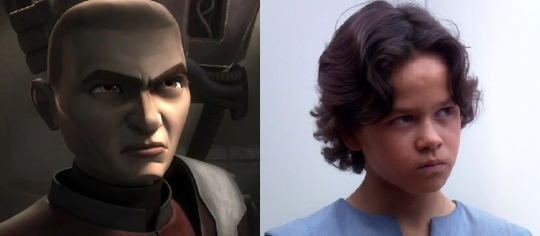
(hahahaha wrong)
And besides that, I think that is in situations like that (when we are talking about individuals) that the actor’s perspective could really have a place to shine (just the same as how Lea was mostly written by Carrie Fisher). In this very heart-warming interview for The New York Times (which you can read full signing up for their 5-free-articles-per-month policy), Temuera Morrison talks a little bit about how he incorporated his cultural background to Boba Fett in The Mandalorian:
“I come from the Maori nation of New Zealand, the Indigenous people — we’re the Down Under Polynesians — and I wanted to bring that kind of spirit and energy, which we call wairua. I’ve been trained in my cultural dance, which we call the haka. I’ve also been trained in some of our weapons, so that’s how I was able to manipulate some of the weapons in my fight scenes and work with the gaffi stick, which my character has.” [2]
The Gaffi stick (or Gaderffii), btw, is the weapon used by the Tusken Raiders on Tatooine, and according to oceanic art expert Bruno Claessens it’s design was inspired by wooden Fijian war clubs called totokia. [3]
And I think is very clear how this background can influence one’s performance and approach to a character, and majorly how much more alive this character will feel like. Beyond that, having an actor from your culture to play and add elements to a character will higly improve your sense of connection with them (besides all the impact of seeying yourself on screen, and seeying yourself portrayed with respect). It would only make sense if the cultural elements that the actor brought when giving life to a fictional individual would’ve been kept and even deepened while expanding this role. And if you’re familiar with Star Wars Legends you’ll probably rememeber that in Legends Jango would train and raise all Clone troopers in the Mandalorian culture, so that the Clones would sing traditional war chants before battles, be fluent in Mando’a (Mandalore’s language) and some would proudly take mandalorian names for themselves. So why didn’t Filoni Inc. take that into account when they went to delve into the clones in The Clone Wars?
2.3 THE WHITE MINORITY
First of all I’d like to state that all this is 100% me conjecturing, and by no means at all I’m saying that this is what really happened. But while I was re-watching CW before The Bad Batch premiere, something came to my mind regarding the whitewashing of the Clones, and I’d like to leave that on the table.
So, you know this kind of recent movies and series that depicted like, fairies in this fictional world where fairies were very opressed, but there would be a lot of fairies played by white actors? Just like Bright and Carnival Row. If you’ve watched some of these and have some racial conscience, you’ll probably know where I’m going here. And the issue with it is that often this medias will portray real situations of racism and opression and prejudice, but all applied to white people. Like in Carnival Row, when going to work as a maid in a rich human house, our girl Cara Delevingne had to fight not to have her braids (which held a lot of significance in her culture) cut by her intolerant human mistress, because the braids were not “appropriate”. Got it? hahahaha what a joy

Look at her ethnic braids!!!
One of the reasons this happens might be to relieve a white audience of the burden of watching these stories and feeling what I like to call “white guilt”. Because, as we all know, white people were never very oppressed. Historically speaking, white people have always been in privileged social positions, and in an exploitative relationship between two ethnic groups, white people very usually would be the exploiters — the opressors. So while watching situations (that every minority would know to be very real) of opression in fiction, if these situations were lived by a white actor, there would be no real-life associations, because we have no historical parameter to associate this situation with anything in real life — if you are white. Thus, there is less chance that, when consuming one of these narratives, whoever is watching will question the "truthfulness" of these situations (because it's not "real racism", see, "they're just fairies"). It's easier for a person to watch without having to step out of their comfort zone, or confront the reality of real people who actually go through things like that. There's even a chance that this might diminish empathy for these people.
Once again, not saying this is specifically the case of the Clones, majorly because one of the main feelings you have when watching CW is exactly empathy for the troopers (at least for me, honestly, the galaxy could explode, I just wanted those poor men to be happy for God’s sake). But I’ll talk more about it later.
The thing is, the whole thing with the Clones, if you think about it, it’s not pretty. If you step on little tiny bit outside the bubble of “fictional fantasy”, the concept is very outrageous. They are kept in conditions analogous to slavery, to say the least. To say the more, they were literally made in an on-demand lab to serve a purpose they are personally not a part of, for which they will neither receive any reward nor share any part of the gains. On the contrary, as we saw in The Bad Batch, as soon as the war was over and the clones were no longer useful as cannonballs, they were discarded. In the (wonderful) episode 6 of the third season of (the almost flawless) Rebels, “The Last Battle”, we're even personally introduced to the analogy that there really wasn't much difference in value between clones and droids, something that was pretty clear in Clone Wars but hadn't been said explicitly yet.
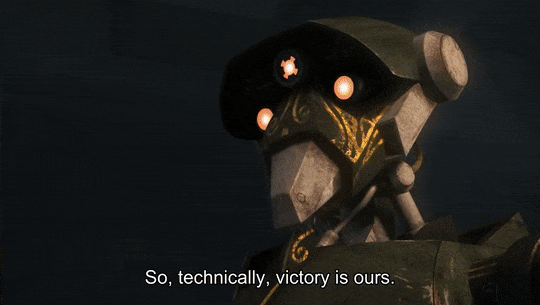
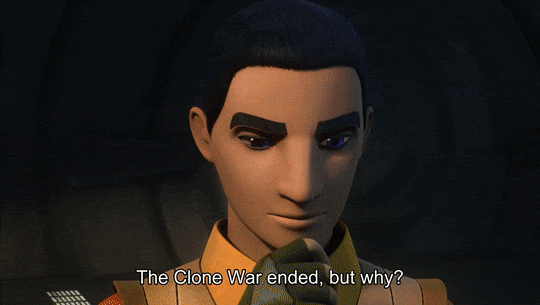
In fact, technically the Separatists can be considered to be more human than the Republic. But that's just my opinion.
So, you had this whole army of pretty much slaves. I know this is a heavy term, but these were people who were originally stripped of any sense of humanity or individuality, made literally to go to war and die in it, doing so purely in exchange for food and lodging, under the false pretense that they belonged to a glorious purpose (yes, Loki me taught that term, that was the only thing I absorbed from this series). Doing all this under extremely precarious conditions from which they had no chance of getting out, actually, getting out was tantamount to the death penalty. They were slaves. In milder terms, an oppressed minority. And again, I don't know if that was the case, but I can understand why Filoni Inc would be apprehensive about representing phenotically indigenous people in this situation. Especially since we in theory should see Anakin and Obi-Wan as the good guys.
(and here I’d like to leave a little disclaimer that I believe the whole Anakin-was-a-slave-once plot was HUGELY misused (and honestly just badly done) both in the prequels and in the animeted series — maybe for the best, since he was, you know, white and all that, and I don’t know how the writers would have handled it, but ANYWAY — I believe this could have been further explored, particularly regarding his relationship with the Clones, and how it could have influenced his revolt against the Jedi, and manipulated to add to his anger and all that. I mean, we already HAD the fact that Anakin shared a deeper conection with his troopers than usual)
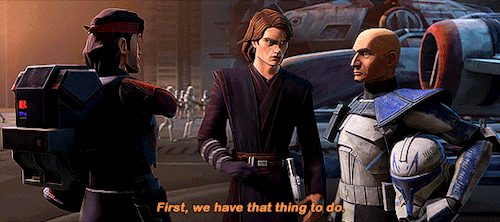

Yes, Rex, you have common trauma experiences to share. But anyway, backing to my track
As I was saying, we are to see them as good guys, and maybe that could’ve been tricky if we saw them hooping up on slavery practices. Like, idk, a “nice” sugar plantation owner? (I don’t know the correct word for it in english, but in portuguese they were called senhores de engenho) Like this guy from 12 Years a Slave?

You know, the slave owner who was “nice”. IDK, anyway
No one will ever watch Clone Wars and make this association (I believe not, at least), of course not. But if we were to see how CW deepened the clone arcs, and see them as phenotypically indigenous, subjected to certain situations that occur in CW (yes, like Umbara), maybe some kind of association would’ve been easier to make.
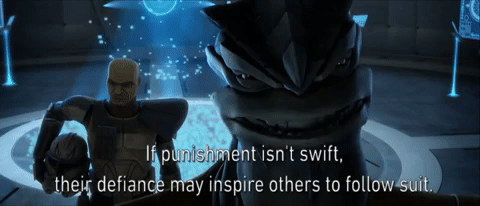
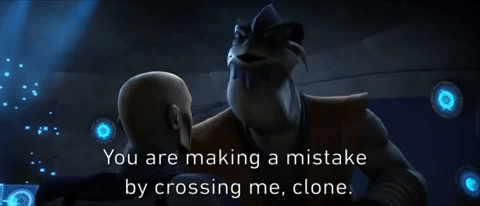
I mean, come onnnn I can’t be the only one seeing it
You see, maybe not the whole 12 Years a Slave association one, but I don’t think it’s hard to see there was something there. And maybe this could’ve been even more evident if they looked non-white. Because historically, both black peoples and indigenous peoples went through processes of slavery, from which we as a society are still impacted today. And to slave a people, the first thing you have to do is strip them from their humanity. So it might be easier to see this situation and apply it to real life. And maybe that could lead to a whole lot of other questions regarding the Clones, the Republic, the Jedi, and even how chill Obi-Wan was about all this. We might come out of it, as lady Ursula Le Guin stated in the fragment above, a bit different from what we were before we watch it.
Maybe even unconsciously, Filoni Inc thought we would be more confortable watching if they just looked white (and because of colonialism and all that, but I’m adding thoughts here).
And of course I don’t like the idea of, idk, looking at Obi-Wan and thinking about Benedict Cumberbatch in 12 Years a Slave or something like that. Of course that, if the Clones were to play the same role as they did in the prequels, to obediently serve the Jedi and quietly die for them, that would have been bad, and hurtfull, and pejorative if added to all that I said here. But the thing is that Clone Wars, consciously or not, already solved that. At least to my point of view, they already managed to approach this situation in an incredible competent way, that is giving them agency.
2.4 AGENCY AND INDIVIDUALITY
So, one of the things I love most in Clone Wars is how it really feels like it’s about the Clones. Like, we have the bigger scene of Palpatine taking over, Ahsoka’s growth arc, Anakin’s turn to The Dark Side, the dawn of the Jedi and rise of the Empire and all that, but it also has this idk, vibe, of there’s actually something going on that no one in scene is talking about? And this something is the Clones. We have these episodes spread throughout the seasons, even out of chronological order, which when watched together tell a parallel story to the war, to everything I mentioned. Which is a story about individuals. Clone Wars manages to, in a (at least to me) very touching way, make the Clones be the heros.

Can you really look me in the eye and say that Five’s story didn’t CRASH you like a full-speed train???? He may not have the same amount of screen-time as the protagonists, but his story is just as important as theirs (and to me, it might be the most meaningful one). Because he is the first to break free from the opression cicle all the Clones were trapped into.

His story can be divided into 6 phases.
1 - First, the construction of his individuality, in other words, the reclaiming of his humanity.
2 - Then the assimilation of understanding yourself as an individual of value, and then extending this to all his brothers, not as a unit, but as a set of individuals collectively having this same newly discovered value.
3 - This makes him realize that in the situation they find themselves in, they are not being recognized as such. This makes him question the reality of their situation.
4 - Freed from the illusion of his state, he seeks the truth about it.
5 - This then leads him to seek liberation not just for himself, but for all the Clones (it's basically Plato's Cave, and I'm not exaggerating here).
6 - And finally, precisely because he has assimilated his individuality and sought freedom for himself and his brothers, he is punished for it.
His story is all about agency. Agency, according to the Wikipedia page that is the first to appear if you type “agency” on Google, is that agency is “the abstract principle that autonomous beings, agents, are capable of acting by themselves” [4], and this abstract principle can be dissected in 7 segments:
Law - a person acting on behalf of another person
Religious - "the privilege of choice... introduced by God"
Moral - capacity for making moral judgments
Philosophical - the capacity of an autonomous agent to act, relating to action theory in philosophy
Psychological - the ability to recognize or attribute agency in humans and non-human animals
Sociological - the ability of social actors to make independent choices, relating to action theory in sociology
Structural - ability of an individual to organize future situations and resource distribution
All of them apply here. And this is just the story of one Clone. We know there are many others throughout the series.
Agency is what can make the world of a difference when you are telling a story about an opressed minority. Because opressed minorities do exist, and opression exists, and if you are insecure about consuming a fictional media about opressed minorities, see if they have agency might be a good place to start. So that’s why I think that everything I said before in 2.3 falls short. Because the solution already existed, and was indeed done. Honestly, making the non-agency representation of the Clones (the one we see in the prequels) to be the one played by Temuera Morrison, and then giving them agency in the version where they appear to be white, just leaves a bitter taste in my mouth.
And honestly, if they were to make the Clones look like Temuera Morrison, and by that mean, take more inspiration in the Māori culture, maybe they wouldn’t even have to change much of their representation besides their facial features. As I said in part 1, I am not by any means an expert in polynesian cultures, but there was something that really got me while I was researching about it. And is the facial tattoos. More precisely, the tā moko.
2.5 TĀ MOKO
Once again I’ll be using the Te Ara: The Encyclopedia of New Zealand as source, and you can find the articles used linked at the end of this post.
Etymologically speaking,
“The term moko traditionally applied to male facial tattooing, while kauae referred to moko on the chins of women. There were other specific terms for tattooing on other parts of the body. Eventually ‘moko’ came to be used for Māori tattooing in general.” [5]
So moko is the correct name for the characteristic tattoos we often see when we look for Māori culture.
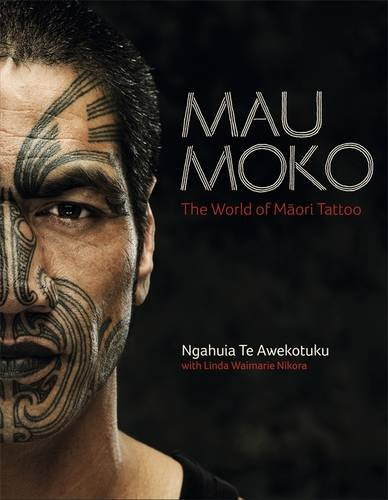
These ones ^. Please also look this book up, it’s beautiful. It’s written by Ngahuia Te Awekotuku, a New Zealand academic specialising in Māori cultural issues and a lesbian activist. She’s wonderful.
According to the Tourism NewZealand website,
“In Māori culture, it [moko] reflects the individual's whakapapa (ancestry) and personal history. In earlier times it was an important signifier of social rank, knowledge, skill and eligibility to marry.”
“Traditionally men received moko on their faces, buttocks and thighs. Māori face tattoos are the ultimate expression of Māori identity. Māori believe the head is the most sacred part of the body, so facial tattoos have special significance.”
[...] “The main lines in a Māori tattoo are called manawa, which is the Māori word for heart.” [6]
Therefore, in the Māori culture, there’s this incredibly deep meaning attributed to the (specific of their culture) tattooing of the face. The act of tattooing the body, any part of the body, is incredibly powerful in many cultures around the globe. The adornment of the body can have different meanings for these different cultures, but all of which I've come into contact with do mean a lot. It’s one of the oldest and most beautiful human expressions of individuality and identity.
And in the Star Wars universe, the Clones are the group that has the deeper connection to, and the best narrative regarding, tattoos. In fact, besides Hera’s father, Cham Syndulla, the Clones are the only individuals to have tattooed skin, at least that I can recall of. And they do share a deep connection to it.
For the Clones, the tattoos (added to hairstyles) are the most meaningful way in which they can express themselves. Is what makes them distinguishable from each other to other people. Tattoos are one of the things that represent them as individuals.

And I’m not BY ANY MEANS sayin that the Clones facial tattoos = Moko. That’s not my point. But that’s one of the things I meant when I said earlier about the wasted potential of the representation of the Clones (in my point of view). Because maybe if it were their intention to base the culture of the clones after the polynesian culture, maybe if it were their intention to make the Clones actually look like Temuera Morrison, this could have meant a whole deal. More than it’d appear looking to it from outside this culture. Maybe if there were actual polynesian people in the team that designed the Clones and wrote them (or at least indigenous people, something), who knows what we could’ve had.
Even in Hunter’s design, I noticed that if you take for example this frame of Temuera from the movie River Queen (2005), where we can have a closer look at the design of his tā moko
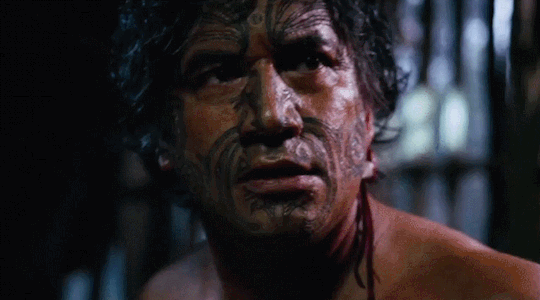
Speaking purely plastically (because I don’t want to get into the movie itself, just using it as example because then I can use Temuera himself as a comparison), see the lines around the contours of his mouth? Now look at Hunter’s.

I find it interesting that they choose to design this lines coming from around his nose like that. But at this point I am stretching A LOT into plastic and semiotics, so this comparison is just a little thing that got my attention. I know that his tattoo is a skull and etc etc, I’m just poiting this out. And it even makes me a little frustrated, because they could have taken so many interesting paths in the Bad Batch designs. But instead they choose to pay homage to Rambo. And I mean, I like Rambo, I think he’s cool and all that.
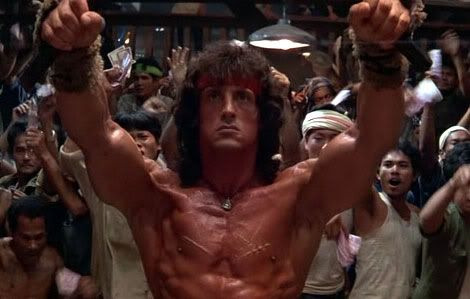
Look at him doing Filipino martial arts
But then, as we say in Brasil, they had the knife and the cheese in their hands (all they had to do was cut the cheese, but they didn’t). Istead, it seems like in order to make Hunter look like Rambo, they made him even whiter???
2.6 SO...
Look, I love The Clone Wars. I’m crazy about it. I love the Clones, I love their stories and plots. They are great characters and one of the greatest addings ever made in the Star Wars universe. They even have, in my opinion, the best soundtrack piece to feature in a Star Wars media since John Williams’ wonderful score. It just feels to me as if their narrative core is full of bagage, and meanings, and associations that were just wiped under the carpet when they suddenly became white. It just feels to me as if, once again, they were trying to erase the person behing the trooper mask, and the people they were to represent, and the history they should evoke.
I don’t know why they were whitewashed. Maybe it was just the old due racism and colonialism. Maybe it was meant for us to not question the Jedi, or our good guys, or the real morality of this fictional universe where we were immersed. But then, was it meant for what?
The Clones were a metaphor for what?

(spoiler: the answer still contains colonialism)
Thank you so much for reading !!!! (and congratulations for getting this far, you are a true hero)
SOURCES USED IN THIS:
[1] Ursulla K. Le Guin, 'The Left Hand of Darkness', 14th ACE print run of June, 1977
[2] Dave Itzkoff, 'Being Boba Fett: Temuera Morrison Discusses ‘The Mandalorian’', The New York Times, published Dec. 7, 2020, https://www.nytimes.com/2020/12/07/arts/television/the-mandalorian-boba-fett-temuera-morrison.html (accessed 15 September 2021)
[3] Bruno Claessens, 'George Lucas' "Star Wars" and Oceanic art' , Archived from the original on December 5, 2020, https://web.archive.org/web/20201205114353/http://brunoclaessens.com/2015/07/george-lucas-star-wars-and-oceanic-art/#.YEiJ-p37RhF (accessed 15 September 2021)
[4] Wikipedia contributors, "Agency," Wikipedia, The Free Encyclopedia, https://en.wikipedia.org/w/index.php?title=Agency&oldid=1037924611 (accessed September 17, 2021)
[5] Rawinia Higgins, 'Tā moko – Māori tattooing - Origins of tā moko', Te Ara - the Encyclopedia of New Zealand, http://www.TeAra.govt.nz/en/ta-moko-maori-tattooing/page-1 (accessed 17 September 2021)
[6] Tourism New Zealand, ‘The meaning of tā moko, traditional Māori tattoos’, The Tourism New Zealand website, https://www.newzealand.com/us/feature/ta-moko-maori-tattoo/ (accessed 17 September 2021)
#THE CLONES DESERVED BETTER WE ALL KNOW IT#star wars#star wars animated series#the bad batch#clone troopers#tbb#mandalorian#colonialism#whitewashing#UnwhitewashTBB#semiotics#visual culture#cw#the clone wars#star wars the clone wars#rex#hunter#the bad batch hunter#dave filoni#temuera morrison#maori culture#moko#anakin skywalker#star wars rebels#obi wan#capitan rex#cody
27 notes
·
View notes
Photo
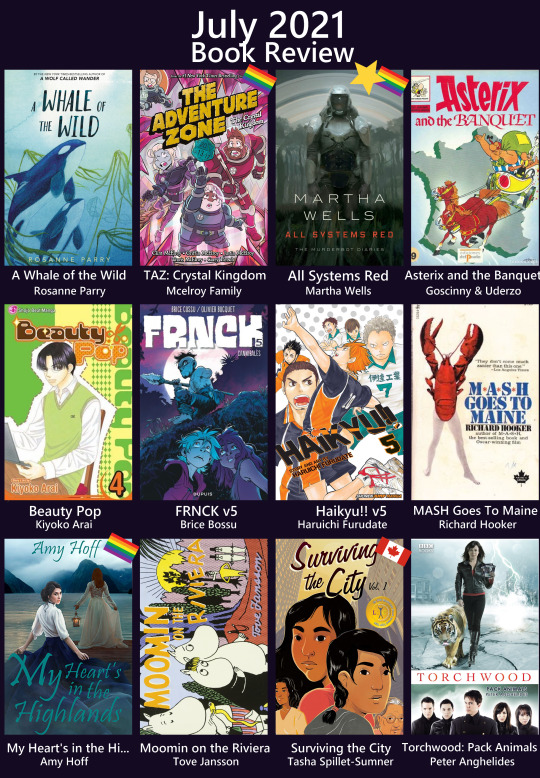
Weirdly enough, I often find myself reading less in the summer, since I have more time than I do during the rest of the year to do other things. Also artfight has been eating up more than a bit of my free time! But here’s a collection a graphic novels I sat around on the hammock reading, and some novels I finished up...
(Everyone go read All Systems Red, holy crow guys)
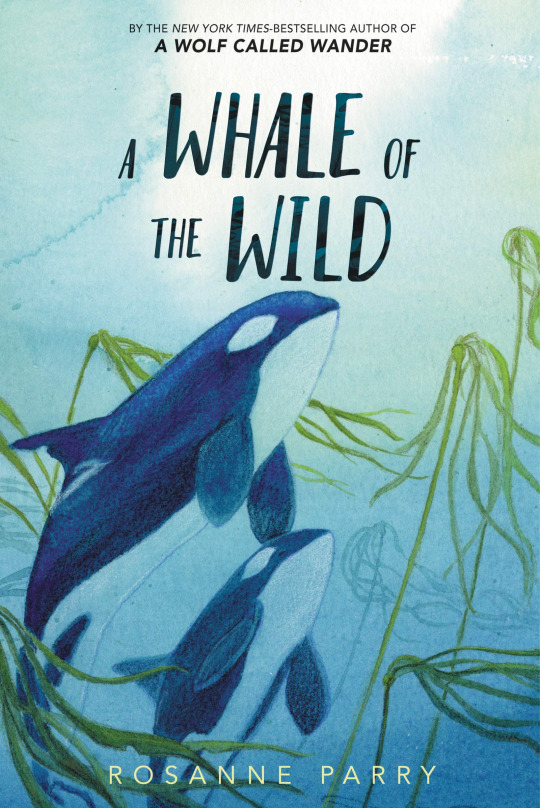
A Whale of the Wild
The “sequel” to A Wolf Called Wander, though it doesn’t actually connect to the previous novel except in the stylistic/thematic sense. A Whale of the Wild is very much a standalone novel. And a pretty decent one! Personally, I think I liked Wolf more, but this one was a pleasant, informative read, with just the right amount of crushing dread sprinkled in. It’s about a young orca called Vega who is learning to become a new wayfinder for her pod but who still has a lot to learn, especially in an ocean that is becoming increasingly hostile to orcas and the other sealife that live alongside humans. When a devastating earthquake hits, Vega and her little brother find themselves separated from their family, lost in a now horrifyingly unfamiliar environment, and fighting starvation as the salmon that sustain them become more and more unreliable. It’s a desperate fight for survival as they search for food and their missing family. This book is written for a middle grade level, and does a really good job of putting the current environmental crisis into an animal’s perspective while giving the readers something to hope for.
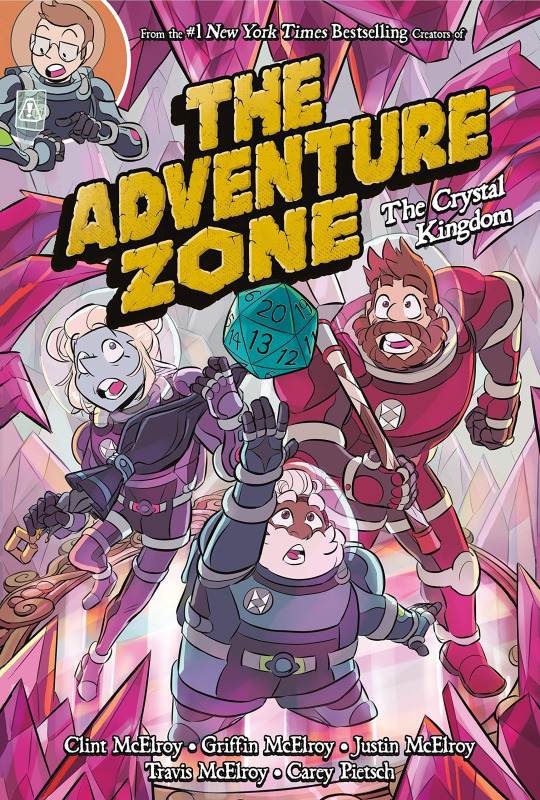
The Adventure Zone: The Crystal Kingdom
Every July I eagerly anticipate the next Adventure Zone graphic novel. This one is for their fourth arc, The Crystal Kingdom, in which Magnus, Taako, and Merle respond to a SOS from a floating laboratory that is gradually being consumed by crystals and which threatens the entire world should it fall into the ocean. Carey Pietsch’s art continues to be absolutely fantastic, so beautifully and hilariously expressive, and this one delivers some great Merle moments, lots of Carey Fangbattle, and, of course, Kravtiz. Kravitz, my beloved…
Anyway, I obviously always recommend these. If you’ve never gotten into The Adventure Zone, I totally recommend either trying these graphic novels — or even better, just go listen to the podcast because it really is both hilarious and creates a shockingly good and heart-wrenching story by the end.
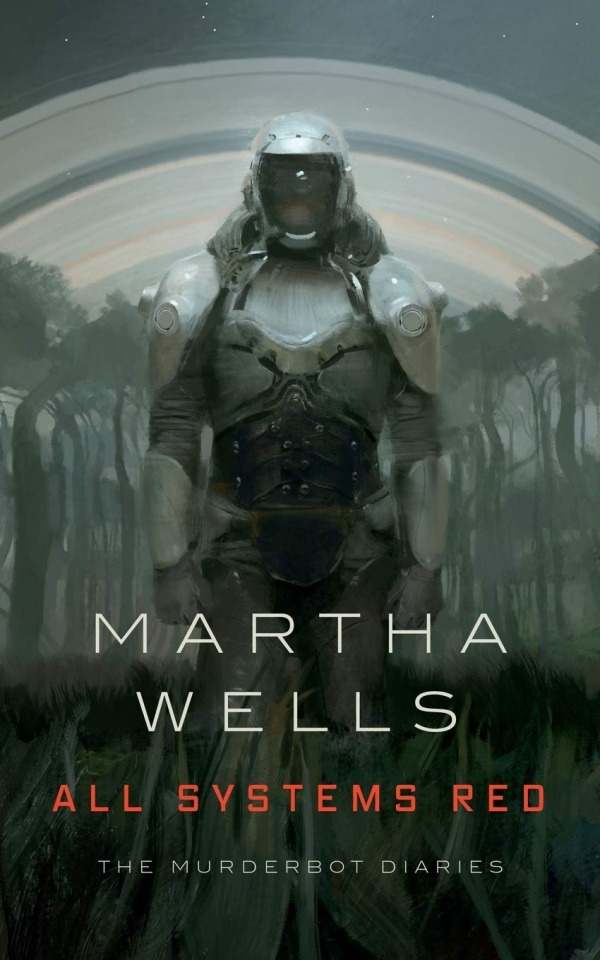
All Systems Red
I’ve seen The Murderbot Diaries on my dash occasionally, and it always looked interesting, but a friend’s recommendation finally compelled me to read the first novella of the series. And holy shit y’all. Absolutely the best book I’ve read this month, it’s amazing. Mind-blowingly good. Also, if you’re like me and want a good audiobook, it’s a nice three-hour listen, very chill!
Anyway, All Systems Red is about a Security Unit, an artificially created being that’s part-organic part-mechanical and all-company-owned-and-controlled. However, self-named “Murderbot” has managed to hack into the system that suppresses its own will, and is now coasting along, doing the least amount of work its job requires not to be noticed, while preferring to spend all its time watching the hours and hours of soap operas it has downloaded into its brain. And it’s a tolerable if somewhat dull life, until the science team that it's currently rented to is attacked and the whole mission goes pear-shaped. Suddenly Murderbot has to scramble to keep its humans alive… while its humans scramble with the realization that their “SecUnit” isn’t actually a mindless robot like they had all believed...
This story is both gripping and hilariously funny. Murderbot has such a unique voice and perspective and it’s an absolute pleasure to follow its story. I reallly need to read the next book...

Asterix and the Banquet
A classic. I was startled when I realized I hadn’t actually read this Asterix story… but hell I’m not gonna complain, it lets me read one of the originals for the first time again! In this Asterix volume, the Indomitable Gauls and the Romans end up arranging a bet — the Romans intend to keep them under siege, trapped in their village, while Asterix is confident that he can easily evade them… and will prove it by going on a tour around all of Gaul, collecting iconic foods from each region in order to return and put on a fine banquet. So we get a fantastic adventure in which Asterix and Obelix run all over the country, pursued the whole way, while making cheerful stops at the various eateries along the way. Also the first book Dogmatix shows up in! All around, a wonderful read, fun like all the best Asterix comics are.

Beauty Pop v4
A less impressive graphic novel. The first Beauty Pop is one of my guilty pleasure manga because… it really is pretty stupid but in the best possible ways. I mean, the whole thing is framed around hairstyling battles, like a shojo sports manga without the sports. It’s bonkers. Unfortunately, the series does not really manage to hold up, and it really begins to feel repetitive and dragging as it continues… as a lot of series like this do. *shrug* Unsurprising but still kinda disappointing I suppose. The building three-way romantic tension is mildly interesting if for no other reason than the main character Does Not Notice and Does Not Care about any of it, which is amusing and refreshing.
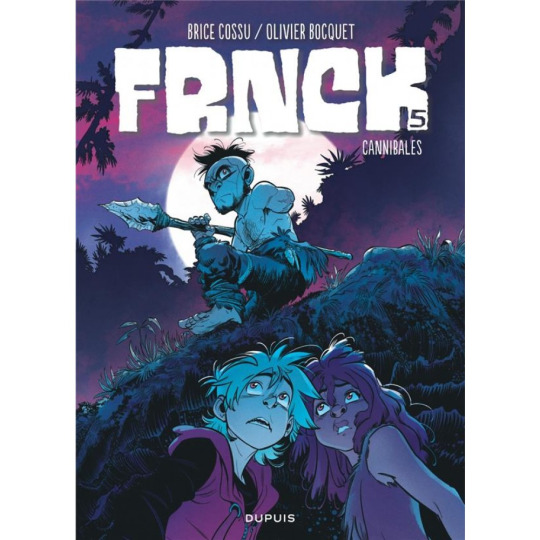
FRNCK v5
Now this series only gets better and better as it goes. This is the first book of the second arc, and somehow the danger just seems to be ramping up and up and up. The cavefamily have lost their home… as well as Léonard and Gargouille. Heartbroken, shocked, and angry, Franck is the one who ends up shouldering the blame for their presumed deaths as the others mourn. Things only get worse when Franck finds himself separated from the family, and in the territory of another tribe, this one hostile and cannibalistic...
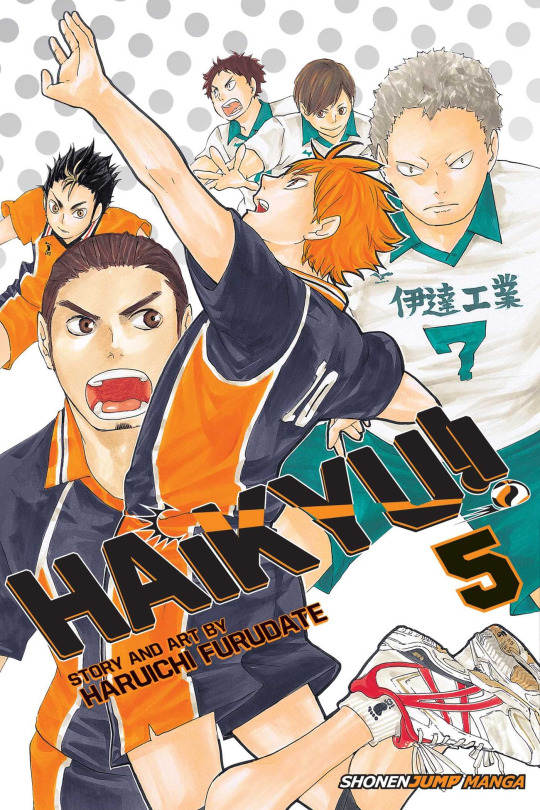
Haikyuu v5
I continue to read this series because it continues to be charming… though it is beginning to feel, maybe, just a little repetitive. Kind of an inevitability with sports manga. But so far it continues to be good enough to overcome that. I’m not sure what I can say about this series that I haven’t already, so I’ll simply say it continues to be one of the most impressive sports manga I’ve read, and the author does a fantastic job of creating engaging characters, fleshed out teams, and really compelling relationships. I do genuinely adore all the main members of Crows, along with a number of characters from the rival teams as well. And of course it has some kickass volleyball scenes that are just drawn so dramatically they can’t help but take your breath away a little.
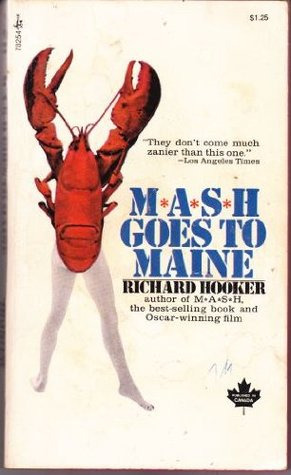
M*A*S*H Goes To Maine
Meh. The original book of the series was actually quite good in my opinion. This one… considerably less so. The first part I enjoyed more, since it was about Hawkeye, Trapper, Duke, and Oliver Jones trying to set up the FinestKind Clinic and Fishmarket in Crabapple Cove (which… is just the best premise I could have ever asked for). However, the book spends most of its time describing the quirky lives and times of other people living in the area and I… just… don’t care. It was funny at times but… I just don’t care. I wanted to hear more about the main cast. Also I found this book felt more racist and misogynistic than the first which also put me off :/ Wouldn’t bother if I were you. Go read the first book instead, or better yet just watch the TV show which is an obvious banger.

My Heart’s in the Highlands
I have had this on my ��currently reading” list for so long but I’m officially giving up. It’s a really good book in theory but my god I can’t get over the pacing.
It’s about Lady Jane, a woman studying medicine in Edinburgh in 1888, and who suddenly finds herself back in the Highlands in the 13th century. Lost and confused, Jane is now at the mercy Clan Donald’s hospitality while she tries to adjust to this new world and hunts for her broken time machine. Fortunately, this hospitality include a burgeoning friendship with a red-haired warrior woman, Ainslie nic Dòmhnaill, who opens Jane’s eyes to the way the world could be.
Listen. It drives me nuts. This book should be completely up my alley, it has everything I like — IT HAS ALL OF ITS HISTORICAL FOOTNOTES CITED AT THE BACK, LITTLE EXTRA DETAILS ABOUT EVERY CHAPTER. THAT’S MY SHIT RIGHT THERE. DO YOU KNOW HOW MUCH I LIKE BEING ABLE TO GO OVER HISTORICAL DETAILS?? AND WELL RESEARCHED FOOTNOTES?? And yet it doesn’t. Fucking. Work for me. It has a kickass Scottish warrior lady as a love interest! It has a badass lady doctor! It has fish-out-of-water culture shock! But it also has a completely meandering plot, no sense of building tension, and a romance that just happens out of nowhere and feels completely unearned and uninteresting.
I would genuinely just rather read Outlander again, which I know has its own host of problems, but at least Outlander felt exciting and interesting and tense and funny. The romance built in fits and starts, it was complicated, and kept me interested. That book had me hooked (and has me hooked every time I reread it) whereas this book I’ve been sadly picking at for months like its a plate of overcooked spinach. This felt like an attempt at a queer, historically accurate knockoff which I would normally be super into but which just could not stick the landing.
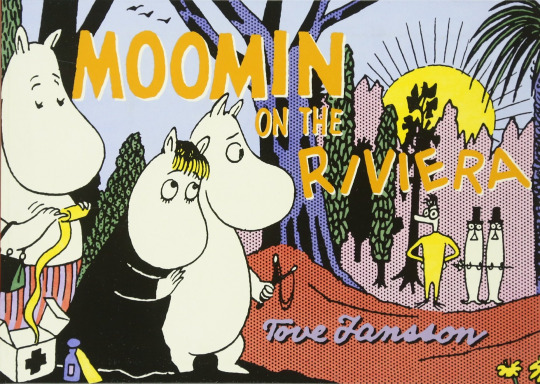
Moomin on the Riviera
My first time actually reading anything from the Moomin canon. I have zero idea how to feel about it! It certainly is as feral as I’ve heard described! Overall, I think I enjoyed it but it sure made me feel strange emotions I didn’t know existed. I’m not even going to try to describe it. Read it if you want a batshit insane anti-capitalist comic.
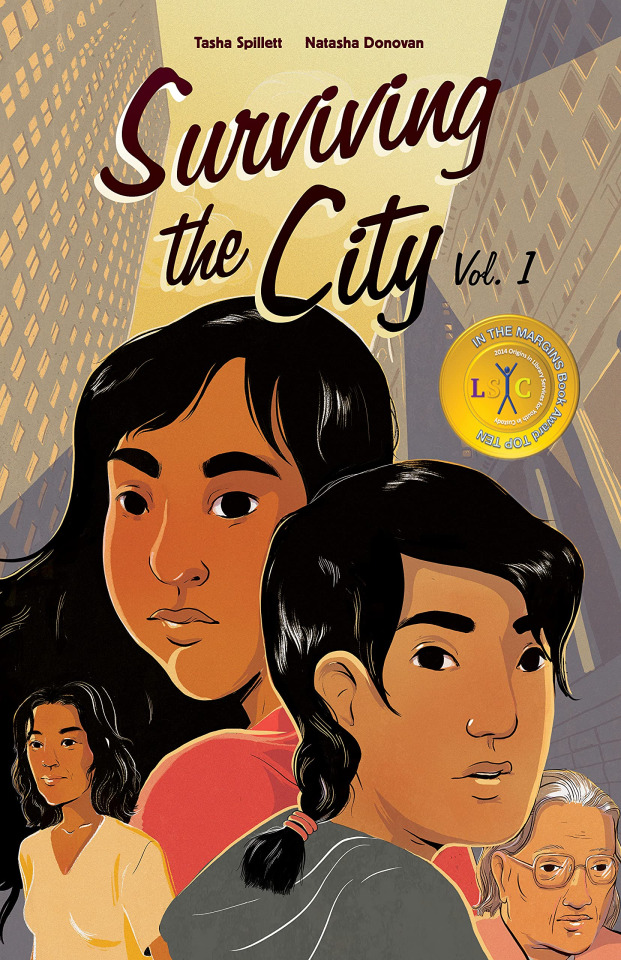
Surviving the City
This was good in some areas, less good in others. It had a very interesting indigenous perspective on life in the modern city, the foster system, and The Missing and Murdered Indigenous Women issue, which I’ve never seen handled in a book before. Something about the pacing did not completely click with me and I found myself getting easily distracted, but it’s definitely worth the read just to experience it and look at the issues it deals with through the characters’ (and author’s) eyes. It did give me a lot to think about and wrestle with, which is sometimes the best thing a book can give you.

Torchwood: Pack Animals
A really fun read, more so than I had ever expected! If you like Torchwood and want more stories about the team before everything goes to shit, this is perfect for that. It includes the entire cast, an interest mystery to be unravelled, lots of slavering monsters, Rhys being really wonderful and sweet (which I didn’t know I wanted until I read this book), and all the humour I expect from Torchwood. I had to send a lot of quotes to my long-suffering girlfriend who a) does not watch this show but b) needs to tolerate it because I find it too funny to keep to myself. It was good enough to make me go out another book of the series since this was the only one my library carried.
#book review#book reviews#torchwood#moomin#queer lit#queer literature#queer books#canlit#canadian literature#manga#haikyuu!!#beauty pop#all systems red#murderbot#mash goes to maine#taz#the adventure zone#the crystal kingdom#a whale of the wild#surviving the city#frnck#asterix
40 notes
·
View notes
Note
I honestly completely blocked any tag related to the show because I couldn't take it anymore. I don't care what sexuality Ivy is but a man would NEVER be her safe choice like????? Have they actually read any Ivy comic???? If Ivy is deciding if being with Harley is healthy for her or not she would isolate herself in the Amazon rainforest occasionaly talking to the indigenous folk there who care about the environment as much as she does with Harley having to re-evaluate herself, use her psychiatrist brain and try to win back Ivy's trust. Could there still be moments of self destruction coming from Harley? Yes. Could there still be moments of fighting between the two? Yes. But there would be no unnecessary love triangle, there would be no cheating and Ivy wouldn't be a toxic girlfriend who can't look at the people around her because she wants a husband apparently.
Also their explanation for keeping kiteman is the most dudebro one ever like "we thought he was funny so fuck character canon"
Because yes, Ivy would settle for someone who started off objectifying her... that is definitely her type
i didn't mind ivy dating a man or being bi. i mean i hc ivy as being bi all the time so. but like the show, she's green daria. to coin a word from /co/. snarky, sad, and moody i guess (haven't watched daria in years) i have no idea why they would have ivy get with someone if they planned her to get with harley anyways? they could have had ivy breakup with kiteman in early season 2, have her come to terms with that before moving on to harley after she was healed from that. or just have her start with harley. it's not like ivy would stop being bi if she was with harley, But then they went down 'that' route and eh kind of spoiled it.

yeah a bumpy road is true for every relationship but this comic/show goes beyond that and it truly feels like ivy doesn't like or doesn't really care about harley at all. which is of course untrue. harley is like the only human (other than bruce and selina at times) that ivy can allow herself to trust. why is she treating her like garbage?
yeah kiteman was an odd choice. he doesn't act like that in comics as far as i know. i think the guys wanted a bit of self-inserting when writing him. which is why he's sticking around.
i always figured ivy would go for non-human/metas for romantic partners anyways (clayface, cheetah, ocean master, king shark, etc.) you know if they just HAD to have her in a relationship before harley.
but yeah it's a dudebro show for dudebros that think girls macking is hot. screw canon and all that.
3 notes
·
View notes
Text
i wanted to make a psuedo-response to this post, because they touched on an issue that’s bothered me for ages regarding how this website loves to hyperfocus on artists like lorde, stevie nicks, and florence welch and pretty much ignore the influence of any artists of colour on what we listen to. only lyrically are hozier and florence welch that similar, and that’s really only in regards to the thematics of their most recent albums. unfortunately the issue goes a lot deeper than it seems to, simply because most- if not all- contemporary musical styles have actually be appropriated from black and indigenous artists. if you pay attention to a white artist saying their influences are black artists you suddenly have to admit that the roots of the music we listen to are intrinsically not white: they’re black and indigenous. hozier cites nina simone and mavis staples as his influences. florence welch was influenced by otis redding and covered one of his songs on her mtv unplugged album in 2012- ceremonials in particular is clearly influenced by gospel-style soul music. stevie nicks has said the supremes, jimi hendrix, and buffy sainte-marie influenced her. lorde listed frank ocean, rihanna, and prince as influences on melodrama. people love to chronically erase black and indigenous influence from music in favour of acting like white people came up with anything on their own.
black musical style has been hijacked for white consumption since the 1950s (and well before that- the 1950s is just when black artists started to go mainstream and their work began to be more obviously replicated), to say nothing of how the west has simultaneously tried to erase and steal indigenous artistry. and i’m just talking about what we consider indie/alt music- it gets a lot worse when you look into the roots of pop, rock, and r&b. there is barely a musical genre that has not been appropriated from black culture- disco, motown, rock, psychedelia, heavy metal, all had their start with black artists and were overwhelming overtaken and watered down for white audiences. even basic practice in contemporary music, like the use of the power cord that was literally pioneered by shawnee artist link-wray, originated from non-white people, in their culture, before being essentially hijacked by white artists.
constantly holding up the same five white artists as ‘mother witches’ in music screams ignorant to me. listen to billie holiday. listen to nina simone. listen to donna summer. listen to fka twigs. listen to prince. listen to janelle monae. listen to buffy sainte-marie. listen to link wray. (and watch this incredible documentary about the influence of indigenous artists on music- it is unmissable and absolutely changed how i listen to music). i’m not saying to stop listening to those artists- but know your history. don’t erase history. don’t contribute to the chronic undervaluing of black and indigenous contributions to music and culture.
celebrate the magic of black and indigenous musical artists, and admit that the magic of some of the artists you might love is invariably borrowed, and probably stolen.
#music#florence welch#andrew byrne hozier#hozier#lorde#lana del rey#indie music#billie holiday#nina simone#p#this is long but please read it#it is very very important and i just want people to be slightly more self aware#also stop with the hades/persephone florence/hozier bullshit its annoying#also MEGA thanks 2 my mom for teaching me all this otherwise i wouldn't know it
11K notes
·
View notes
Note
Do you know any good links to work out how long it takes Carracks or cog ships to sail in mediveal or renaissance times? One of my characters is always on the ship and it’s messing with the plot as I don’t know how long it takes or even how to work it out or a good sheet.
Unfortunately, this is not my area of expertise.
I do know that some of it has to do with the shape of the ship, its sails, hull configuration, etc. Some of it has to do with the crew’s skill, and/or their knowledge of the winds and the currents. Some of it has to do with pure luck, and some of it has to do with their ability to calculate latitude AND longitude...the latter of which didn’t become a thing until much later, when pocketwatches were reliable and star charts delineating rising and setting times throughout the year were available.
One of the few things I do know is that schooners, slender sailing ships plying the coastal waters of America, were a lot faster than European ships because they borrowed their hull designs from indigenous American’s canoe designs: shallow flat-bottom drafts (with a bit of a keel for masts, etc), pointed prow and stern, rather than the cut-off look of galleons, etc, that were more akin to a rowboat. Schooners were not necessarily as stable on the high seas, however, even if they were still faster due to their lower drag issues.
If the winds and currents are favorable, i know it could take 2-3 weeks to go from England to North America, but if they were disfavorable or the route not really known, it could take upwards of 2 months. I also know that the Slave Trade Triangle existed in part because of the great Atlantic current that sweeps in from the south, travels up the Eastern Seaboard of North America, then curls east and northeast toward Spain, France, England, etc, some of it splitting toward the Mediterranean, but most of it heading for the English Channel and the North Sea...and that there’s a lesser current that goes south from Europe down to Africa before heading west again near the equator.
I also know that unlike steamships, which can operate day and night (provided they have enough fuel, etc), sailing ships are very much at the mercy of the winds, unless they also happen to be galley ships with enough warm bodies to man the oars. Viking era raiding vessels were very close to schooners / canoes in their shape, low to the water, everyone on board rowed when the winds were not favorable, etc...so they were fast and sleek and maneuverable in the way that carracks were not.
And I know that sea fog could be quite dangerous. Aside from lacking much in the way of wind to encourage movement, you actually didn’t want to move quickly under full sail in a fog, because fogs could happen in the middle of the ocean...but they could also happen near land masses, and that meant running around, damaging the ship, perhaps even losing cargo and lives alike.
But aside from things like that, I do not know the actual sailing speeds to get from point A to point B over long distances. Short distances...you still have to deal with the tides. Even sailing between Calais and Dover, the shortest route across the English Channel, could be an overnight affair, and delayed even further if the tides are wrong to pull into port, or even just leave port in the first place.
For people who might know, you might want to check for #MedievalSailingSpeeds or #MedievalShip enthusiasts, historical records of how long it took for people to get from one point to another--heck, even the Bible can technically tell you how fast Roman ships could sail across half the Mediterranean, with what’s-his-face claiming Roman citizenship meant he could only be tried by the Senate for daring to be a Christian, and that long-ass voyage to get him to Rome, and how dangerous it was, etc...
At the same time, Carthage (a major enemy of ancient Rome) was literally only a day or two of sailing away from the shores of Italy, and thus Rome, if the winds, etc, were in favor. (As described by a guy whose name I cannot remember pointing out to everyone in the Senate that the fruit in his hand was literally fresh-picked just a few days ago in an orchard on the outskirts of Carthage, and had made its way to Rome in a very short period of time.)
I also know that wise sailors would learn about prevailing winds that are affected by seasonal changes, too, and use those. Traders from the various eastern African nations would travel up the coast and over to India and southeast Asia when the winds were favorable at certain times of year, and then roughly six months later when the winds shifted to the opposite direction, would sail back home again for the other half of the year, laden with all the things they had bought or traded for in the months they had spent selling their original transported goods...but again, I couldn’t tell you how fast those ships sailed
Good luck, and I hope you find better resources than me, lol!
@MedievalSailingSpeeds
#MedievalSailingTimes
#answers
1 note
·
View note